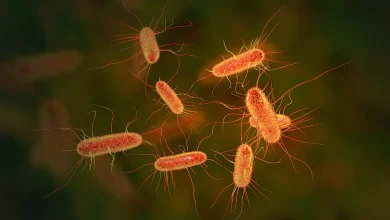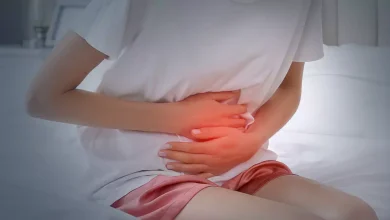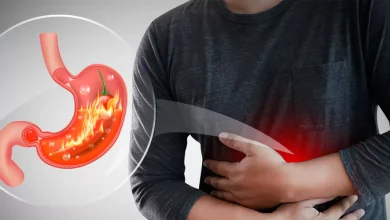What is Breast Pain (Mastalgia)

Breast pain (mastalgia) is tenderness, sharpness, throbbing, stabbing, tightness, or burning pain in the breast tissue. The pain might be frequent or it may happen once in a while. It can also occur in men, women, and transgender people. In men, breast pain is most usually caused due to a condition known as “gynecomastia” which means a rise in the amount of breast gland tissue that occurred due to an imbalance of the hormones oestrogen and testosterone. Gynecomastia can affect one or both breasts and at times unevenly. In transgender women, hormone therapy might result in breast pain. In transgender men, breast pain might be caused by the small amount of breast tissue that is left after a mastectomy.
What are the Types of Breast Pain?
There are two distinct types of breast pain, which are:
– Cyclic breast pain
This type of breast pain is linked with the menstrual cycle and due to this, it’s more common among women aged between 20-to-50. It’s specifically more common in women who are on the younger end of that age range. Breast pain can occur in one breast or both, and it usually occurs because of natural hormonal shifts, approximately a week before your period, you might begin to feel some amount of pain in the upper, outer parts of your breasts. Cyclic breast pain generally fades away on its own after you get your period, but returns during your next menstrual cycle. Women mostly don’t experience this type of breast pain after-menopause.
– Noncyclic breast pain
Noncyclic breast pain has nothing to do with your menstrual cycle and it may occur due to some other reasons. It is more common in 40-to-50-year-old women.
What are the Symptoms of Breast Pain?
The symptoms of breast pain vary according to its type.
Symptoms of cyclic breast pain:
– Linked with the menstrual cycle and changing hormone levels
– Is dull, heavy, or aching.
– Swelling, fullness, or lumpiness of the breasts.
– Generally affects both breasts, especially the upper, outer portions, and can spread to the underarm.
– Gets worse during the two weeks leading up to the beginning of the menstrual period.
– Mostly affects women who are in their 20s and 30s, along with the ones in their 40s who are leading towards menopause.
Symptoms of noncyclic breast pain
– Not related to the menstrual cycle.
– Tight, burning, stabbing, or aching sensation in the breasts.
– Intermittent or constant.
– Normally one breast is affected, in a localised area, but might spread more circumlocutory across the breast
– Mostly occurs after menopause in women.
What are the Causes of Breast Pain?
Breast pain is more common among women who haven’t completed menopause, even though it can happen after menopause also. Men who have gynecomastia, and transgender people who are going through gender reassignment might also develop breast pain. In various cases, there is no clear cause for breast pain.
Cyclic breast pain often might occur because of your natural menstrual cycle, but the causes of noncyclic breast pain might include the following:
– Birth control pills.
– Infection.
– Pregnancy.
– Infertility medicines.
– Inflammation.
-Hormone and prior radiation therapy.
– Antidepressants.
– Fibroadenomas (non-cancerous lumps).
– Breast cysts.
– Having bigger breasts.
– Scars because of surgery.
– Smoking.
– Drinking caffeine.
– Stress.
– Breastfeeding.
What are the Risk Factors of Breast Pain?
The risk factors of breast pain might include:
– Breast size
Women with large breasts might suffer from noncyclic breast pain in connection with the size of their breasts. Neck, shoulder, and back pain might also occur with breast pain that developed because of large breasts.
– Breast surgery
Breast pain is often linked to breast surgery.
– Fatty acid imbalance
An imbalance of fatty acids within the cells might affect the sensitivity of breast tissue to circulating hormones leading to breast pain.
– Medication use
Some specific hormonal medications, such as infertility treatments and oral birth control pills, might trigger breast pain. Breast tenderness might also occur due to oestrogen and progesterone hormone therapies that are used after menopause. Breast pain might also be linked with some antidepressants, such as selective serotonin reuptake inhibitor (SSRI) antidepressants. Medicines to treat high blood pressure and some antibiotics might also cause breast pain.
What are the Complications of Breast Pain?
Because of the various potential causes of breast pain, complications generally depend on the particular causes. In most cases, there are no complications, and breast pain goes away naturally. Breast pain or fibrocystic breasts does not mean you have an increased risk of developing cancer but lumpy tissue may make it difficult to see tumours on a mammogram.
How Breast Pain is Diagnosed?
Tests to diagnose breast pain include:
– Clinical breast exam
During this process, your doctor will look out for changes in your breasts, by checking your breasts and the lymph nodes in your lower neck and underarm. Your doctor will also check and listen to your heart, lungs, chest, and abdomen to examine whether the pain is because of some other underlying condition. In case your medical history and the breast and physical exam do not reveal anything unusual, you might not require additional tests.
– Mammogram
If there is a breast lump or abnormal thickening, or there is a particular area of pain in your breast tissue, you might have to go through an X-ray exam of your breast that examines the area of concern found during the breast exam (diagnostic mammogram).
– Ultrasound.
Sound waves are used during ultrasound to produce images of your breasts, and it’s mostly done along with a mammogram. An ultrasound might be needed to evaluate a focused area of pain even if the mammogram results are normal.
– Breast biopsy
A biopsy is needed if there are suspicious breast lumps, areas of thickening, or unusual areas are detected during imaging before your doctor makes a diagnosis. A small sample of breast tissue from the area will be taken during a biopsy and sent to the lab for further examination.
What are the Treatment Options Available for Breast Pain?
For many people, breast pain fades away on its own over a certain period and treatment might not be needed.
In case treatment is needed, your doctor may recommend you some treatments including:
– Medication
Because of the reason that cyclic breast pain is a regular part of your menstrual cycle, it doesn’t need as much treatment. Some pain-relieving medications might be given if the pain is becoming unmanageable such as-
Acetaminophen.
Naproxen sodium.
Ibuprofen.
Diclofenac.
Aspirin.
If your breast pain can’t be managed even after these medicines then your doctor might prescribe two prescription medications such as Danazol or Tamoxifen.
– Removing an underlying cause or aggravating factor
This might include simple adjustments, including wearing a bra that is comfortable with extra support.
– Applying a topical nonsteroidal anti-inflammatory (NSAID) medication
You might need to use NSAIDs if your pain is severe and your doctor might prescribe an NSAID cream to apply directly to the area that is paining.
– Avoiding birth control pills.
If you are taking birth control pills, you may be advised to skip the pill for a week or change the birth control methods because birth control pills might be a reason for your breast pain.
– Decreasing the dose of menopausal hormone therapy
If you are taking menopausal hormone therapy then you can reduce the dose or stop it completely.
– Alternative medicines.
In some people, vitamins and dietary supplements might reduce the symptoms of breast pain and its severity.
Living with Breast Pain
Though breast pain might cause some amount of discomfort, it’s generally not serious and the symptoms can usually be managed with some care and medicines. If you have other symptoms along with breast pain including lumps, changes in the texture of your breasts, or discharge from your nipples you shall discuss with your doctor who will diagnose your problem and start treatment accordingly.
Whom to Consult?
You shall seek medical attention if breast pain continues daily for more than a couple of weeks, develops in one particular area of your breast, gets worse over time, making it difficult to do your, and makes you awake from sleep at night. A doctor can help to detect the cause of your pain and create a treatment plan to fit your requirements.






